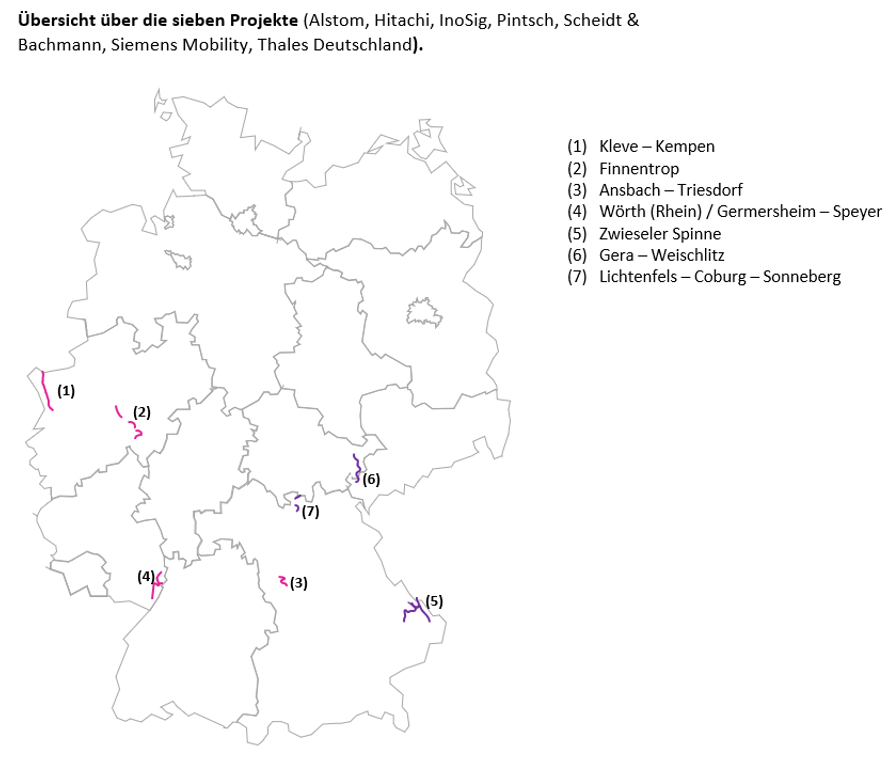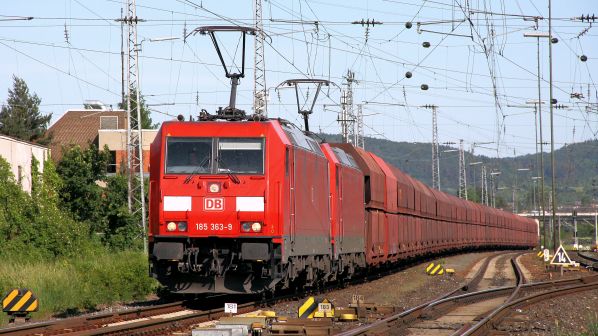A joint initiative of German Rail (DB), the German Railway Industry Association (VDB) and the Federal Railway Authority (EBA) has awarded contracts to install digital interlockings on seven regional lines this year, as part of plans to accelerate the digitisation of the German railway network.
The work will be carried out by seven contractors, including Alstom, Hitachi, InoSig, Pintsch, Scheidt & Bachmann, Siemens Mobility and Thales Deutschland, on interlockings in the states of North Rhine-Westphalia, Rhineland-Palatinate, Thuringia and Bavaria. The interlockings are:
- Finnenstrop (Siemens Mobility)
- Ansbach - Triesdorf (InoSig)
- Wörth am Rhein/Germersheim - Speyer
- Zwieseler Spinne (Pinsch)
- Gera - Weischlitz (Hitachi Rail Germany STS)
- Kleve - Kempen, and
- Lichtenfels - Coburg - Sonneberg.
The initiative is financed as part of the German federal government’s pandemic stimulus package, which provides for additional investments of over €500m, under an agreement between DB, VDB and EBA agreed in September 2020. €100m of the funding was used last year, with the remaining €400m to be spent this year.
The initiative is expected to accelerate the digitisation of the German network by up to five years, with the rollout now expected to be completed in 2035, rather than 2040 as originally planned.
The new contracts follow the implementation of digital interlockings in other locations, such as the Annaberg - Buchholz and Rostock - Warnemünde sections.
The rollout of digital interlockings is expected to enable greater efficiency, capacity and eco-friendliness on the national network, and forms the basis for equipping lines with ETCS.

“The advancing digitisation allows us to run more trains on the same route,” says Mr Andre Rodenbeck, president of VDB. “And more rail simply means more climate protection. The rapid implementation of the high-speed programme clearly shows the technologies are ready. We are ready to usher in a new era of rail transport with digitisation and automation.”
“Digital Rail Germany (DSD) is rapidly picking up speed,” says Mr Enak Ferlemann, parliamentary secretary of state at the Federal Ministry for Transport and Digital Infrastructure (BMVI). “Now we have to use the experience from the pilot projects to support the further implementation of digital interlockings to reduce costs and construction times even more. At the same time, we are looking at broadening the DSD’s approach, for example to be able to implement the ‘Deutschland Takt’ nationwide regular-interval timetable even faster, through digital capacity management.”
Finnenstrop
Siemens Mobility confirmed that it plans to complete the digitisation of the Finnestrop interlocking by the end of this year.
The work will include the replacement of 404 interlocking units, including signals, switch points and derailers, along a 60km section of line. In addition, 15 level crossings will be equipped with digital interfaces, and four will also receive new safety systems. Following implementation, the section’s entire control and safety technology will be operated from a single control point.
“The new digital interlocking will reduce disruptions in operation and provide the basis for rail automation and improved rail mobility,” says Mr Gerhard Greiter, CEO for Northeast Europe at Siemens Mobility.

